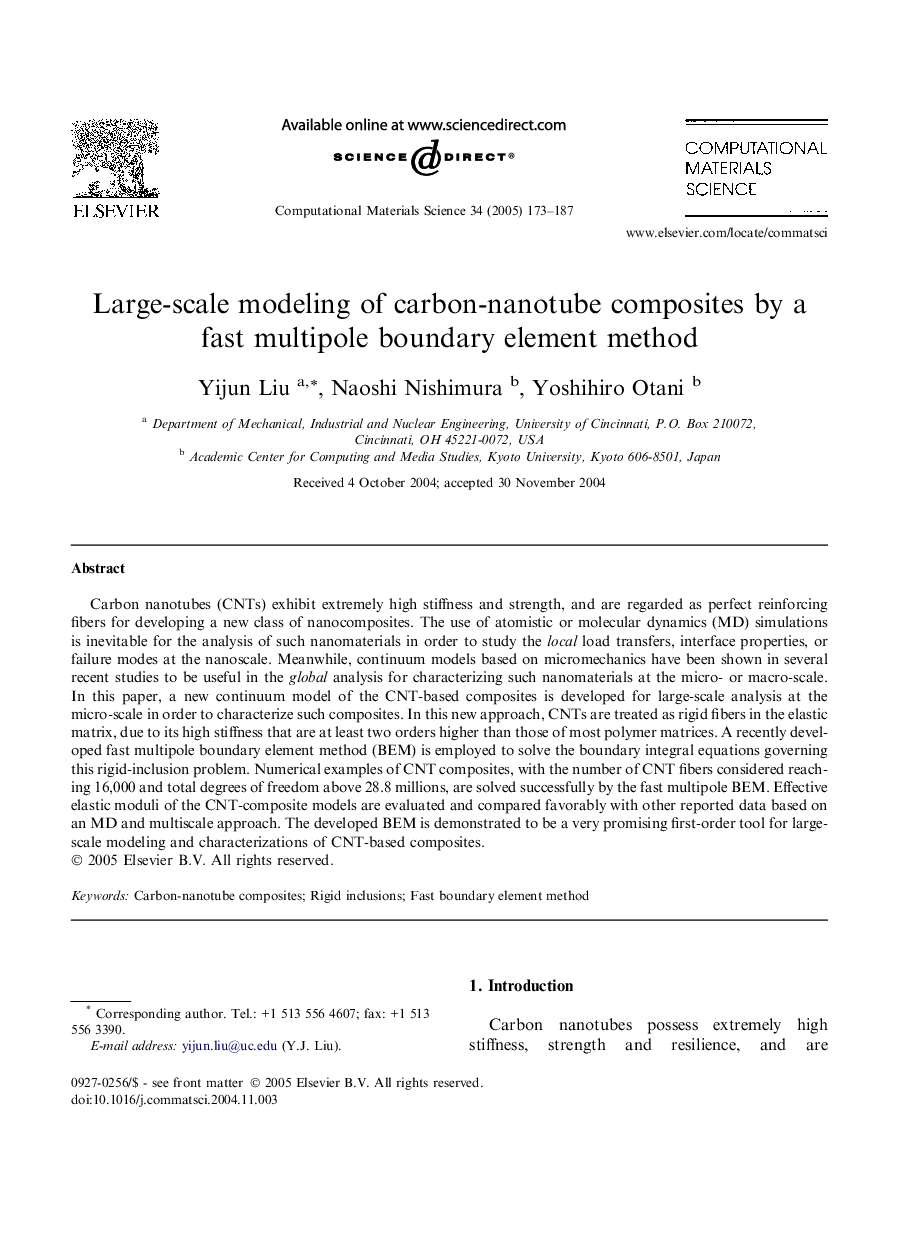| Article ID | Journal | Published Year | Pages | File Type |
|---|---|---|---|---|
| 10644589 | Computational Materials Science | 2005 | 15 Pages |
Abstract
Carbon nanotubes (CNTs) exhibit extremely high stiffness and strength, and are regarded as perfect reinforcing fibers for developing a new class of nanocomposites. The use of atomistic or molecular dynamics (MD) simulations is inevitable for the analysis of such nanomaterials in order to study the local load transfers, interface properties, or failure modes at the nanoscale. Meanwhile, continuum models based on micromechanics have been shown in several recent studies to be useful in the global analysis for characterizing such nanomaterials at the micro- or macro-scale. In this paper, a new continuum model of the CNT-based composites is developed for large-scale analysis at the micro-scale in order to characterize such composites. In this new approach, CNTs are treated as rigid fibers in the elastic matrix, due to its high stiffness that are at least two orders higher than those of most polymer matrices. A recently developed fast multipole boundary element method (BEM) is employed to solve the boundary integral equations governing this rigid-inclusion problem. Numerical examples of CNT composites, with the number of CNT fibers considered reaching 16,000 and total degrees of freedom above 28.8 millions, are solved successfully by the fast multipole BEM. Effective elastic moduli of the CNT-composite models are evaluated and compared favorably with other reported data based on an MD and multiscale approach. The developed BEM is demonstrated to be a very promising first-order tool for large-scale modeling and characterizations of CNT-based composites.
Keywords
Related Topics
Physical Sciences and Engineering
Engineering
Computational Mechanics
Authors
Yijun Liu, Naoshi Nishimura, Yoshihiro Otani,
